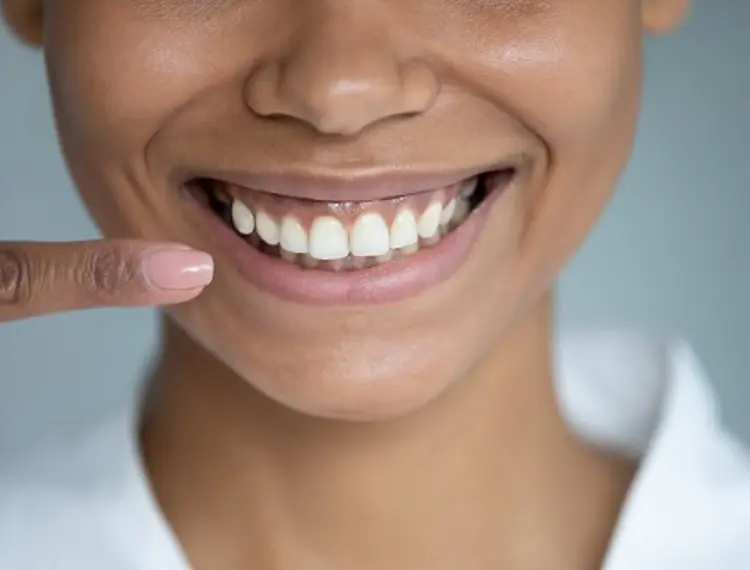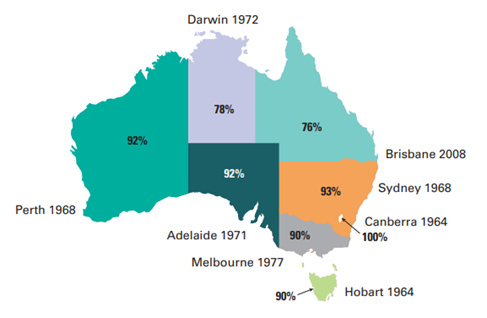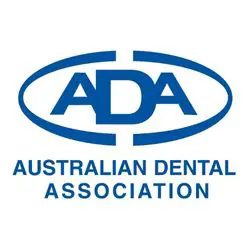
Key messages
Tooth decay is the most common chronic disease affecting Australian adults and children. But you can almost completely prevent it. One way to help prevent tooth decay is by using fluoride.
What is fluoride?
Fluoride is a natural mineral found in:
- rocks and soil
- tea
- vegetables
- grains and water.
Fluoride forms when salts from the gas fluorine combine with the minerals in rocks and soil.
The amount of fluoride found in the environment is usually not enough to protect your teeth from decay on its own. That is why small amounts of fluoride are added to:
- tap water
- toothpaste
- mouthwash
- other dental products.
How does fluoride work?
Fluoride works best when you always have low levels in your mouth. The best way to do this is by drinking plenty of fluoridated water during the day.
Fluoride protects teeth by:
- reducing minerals from being dissolved out of the tooth enamel when acids attack the teeth
- helping tooth minerals go back into tooth enamel in the early stages of tooth decay
- stopping mouth bacteria from using sugar from food and to make acid that will attack the teeth.
What is water fluoridation?
Water fluoridation is when fluoride is added to drinking water to make the teeth stronger and protect them from tooth decay. Some communities already have fluoride naturally in their drinking water. The amount of fluoride in the water is often topped up to be at the recommended level to protect teeth.
Fluoridated drinking water safely strengthens everyone's teeth. It can reduce tooth decay in people of all ages. Drinking fluoridated water as a child can also lower your risk of tooth decay as an adult.
The level of fluoride in drinking water should be within the range of 0.6 - 1.1 milligrams per litre (mg/L). This is also known as parts per million (ppm).
Water fluoridation began in America in 1945. Fluoride has been added to tap water in Australian towns and cities since 1953. Beaconsfield in Tasmania was the first town in Australia with fluoridated water.
The Centers for Disease Control and Prevention in the United States calls water fluoridation one of the great public health achievements of the 20th century. It is so effective that health authorities around the world strongly support using it. This includes:
- the World Health Organisation
- the National Health and Medical Research Council
- the Australian Medical Association.

This map shows the percentage of the Australian population with access to fluoridated drinking water as of 2017. 89% of the Australian population has had access to fluoridated drinking water.
Not all Australians have access to fluoridated community water, however adding fluoride to your own water is not recommended.
What is dental fluorosis?
Dental fluorosis can occur when a child takes in too much fluoride while their teeth are growing under the gums. The surface of the teeth can have white lines or spots, pits or stains, when they push into the mouth.
In Australia, dental fluorosis is mostly mild. Mild fluorosis does not have a negative impact on the health of the teeth or how they look. Its appearance can also fade away over time.
Can I be allergic to fluoride?
No. The American Academy of Allergy, Asthma and Immunology reports that fluoride ions are too small to be an allergen.
More information about fluoride
For more information on water fluoridation, read the National Health and Medical Research Council Public Statement 2017: Water Fluoridation and Human Health in Australia.
For Australian recommendations on fluoride use, read the 2019 Australian Fluoride Guidelines.


